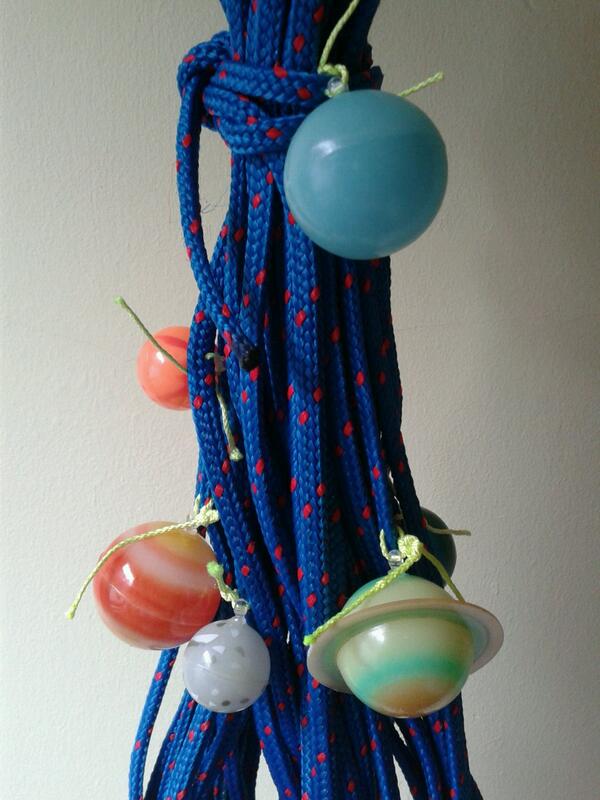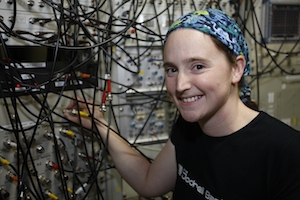by Megan Argo
- Published: Tuesday, April 15 2014 08:00
At it's most basic, the science of astronomy involves nothing more than collecting the faint photons emitted by distant objects, and using that information to try to understand the physics and chemistry (and, one day perhaps, biology?) of what we see out there. Most of us have had the exhilarating experience of seeing a distant object, be it a planet, a star cluster, or a distant galaxy, through the eyepiece of a telescope and realising that the light has travelled through space for an unimaginably long time before finally coming to rest on the retina in the back of your eyeball. Sometimes I feel sorry for all the photons which, after travelling so far, end up hitting the ground.
Much of astronomy education, outreach and engagement, naturally, involves taking telescopes to people and sharing this experience. Some of my most memorable observing sessions happened in the remote areas of Western Australia, where we held star parties in Aboriginal communities under some of the darkest skies I have ever experienced, with some of the most interesting questions being asked by the local children, and cultural stories about the sky exchanged over a campfire. There are times when this approach is not practical, and occasions when it is impossible, but simple demos can often be created out of everyday objects, and a little imagination.

How do you illustrate the scale of the solar system in a school hall, or a busy town centre, for example? The first time I had this problem, the solution was to take a small plastic orrery kit, the build-it-yourself kind science museum shops often stock, and dismantle it. Instead of fixing the little planets onto the poles provided, I glued in some string, and tied them to a rope. The resulting demo can be modified to fit whatever space you have by sliding the planets along the rope, keeping the relative separation correct of course, and can be used with almost any size of group: with one volunteer for each of the planets plus the Sun, the rest of the class can be comets, asteroids, or the Oort cloud if you have a really large group. The resulting orbital motions (and occasional planetary collisions!) are memorable for the children, and can be highly entertaining to watch.

Another fun way to present some astronomy (or any science, really) is through song - if you're confident enough to stand up in front of a room full of children and sing! But you can be sure that, with only a little encouragement, they will usually join in. Taking a portable planetarium out to primary schools in the Greater Manchester area with fellow students, we noticed that, below a certain age, you can't do too much in the planetarium. In the reception class (age 4-5), some are often afraid of the dark, which lessens the impact of the stars projected overhead. But all it takes to get them singing is "do you know a song about stars?", and they will start up Twinkle Twinkle Little Star straight away. Song can be used with much older students too of course; a certain professor I know has been known to sing jazz songs about general relativity to their university classes. I've used the same approach myself when asked to explain my research to my colleagues in 60 seconds: I re-wrote the Beatles Can't Buy Me Love, to be about wide field VLBI surveys of nearby galaxies. Slightly embarrassing for me, yes, but memorable for the audience!
Sometimes though, an entirely different approach is required. How do you explain active supermassive black holes producing jets in the centre of galaxies, or what a gravitational lens looks like, to someone who is blind? Far from impossible, it just takes some imagination, and a different way of thinking about the language you use. Tactile creations can be used to show what the sky looks like through a telescope, the way the face of the Moon is covered in craters, the rings around Saturn, the separation of the planets, or the spiral arms of a galaxy. And with everyday items you can describe an awful lot. In my house, the place-mats on the table have stood in for spiral galaxies, and a cushion has recently become a tactile picture of the sky, showing galaxies of different sizes to illustrate different distances, sequins and beads of different sizes and feels can show interesting and more complicated galaxies such as the Cartwheel and NGC660, both examples of galaxies which have had close encounters resulting in complicated structures.
Astronomy is one of the mankind's oldest pastimes. We should never forget that, and make sure we include everyone in our efforts to explain the universe.
###
 Megan Argo is a radio astronomer who has worked at four institutes across three countries and two continents. She regularly observes with networks of radio telescopes spread across (at least) fifteen countries and three continents, and has conducted outreach activities from inner city Manchester to rural India and the remote outback of Western Australia. She loves a challenge.
Megan Argo is a radio astronomer who has worked at four institutes across three countries and two continents. She regularly observes with networks of radio telescopes spread across (at least) fifteen countries and three continents, and has conducted outreach activities from inner city Manchester to rural India and the remote outback of Western Australia. She loves a challenge.








Comments